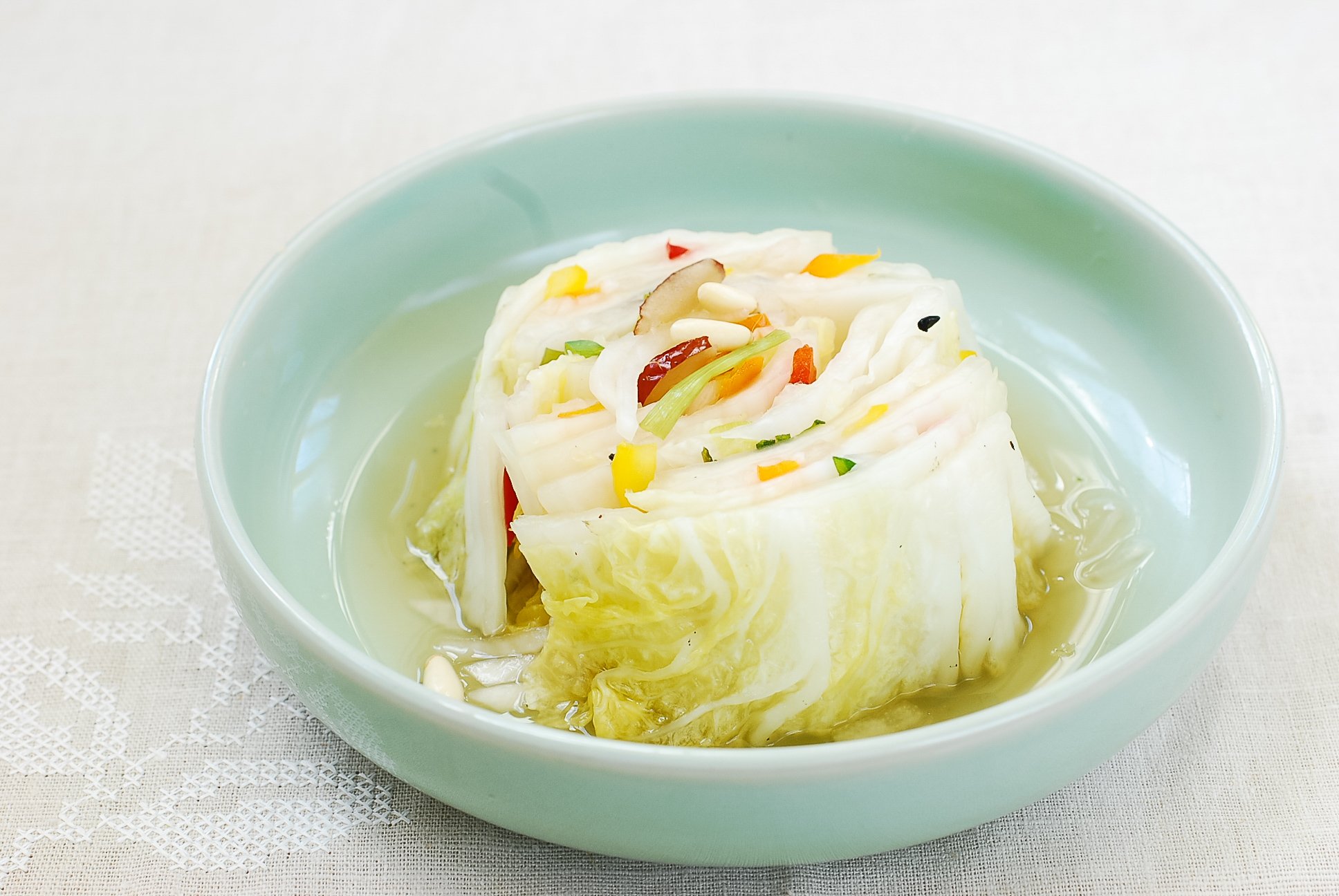Kimchi Making Guide: Expert Tips and Tasty Recipe Ideas

Kimchi, the beloved Korean fermented dish, has gained popularity worldwide for its unique flavor profile and health benefits. Made primarily from cabbage, radishes, and a variety of seasonings, kimchi is not only delicious but also packed with probiotics and nutrients. While store-bought kimchi is readily available, there’s something special about making it at home. In this Kimchi Making Guide, we’ll explore tips on making kimchi from scratch and provide some recipe recommendations to inspire your culinary journey.
Understanding the Basics of Kimchi
Before diving into the process of making kimchi, it’s essential to understand the basic components and techniques involved. It typically consists of Napa cabbage, Korean radish (mu), garlic, ginger, Korean chili flakes (gochugaru), salt, and other flavorings such as fish sauce or shrimp paste. The key to successful kimchi lies in the fermentation process, which occurs when the vegetables are salted and allowed to ferment over time.
Tip 1: Select Fresh and Quality Ingredients
The quality of your ingredients will significantly impact the flavor and texture of your kimchi. Choose fresh Napa cabbage and Korean radishes that are firm and free from blemishes. Opt for high-quality Korean chili flakes (gochugaru) for authentic flavor, and use fresh garlic and ginger for maximum aroma and taste.
Tip 2: Properly Salt and Rinse the Vegetables
Salting the vegetables is a crucial step in the kimchi-making process, as it helps to draw out excess moisture and initiate the fermentation process. After cutting the cabbage and radishes into pieces, generously sprinkle them with salt and allow them to sit for a few hours. Rinse the salted vegetables thoroughly to remove excess salt before proceeding with the recipe.
Tip 3: Use Korean Chili Flakes (Gochugaru) for Authentic Flavor
Korean chili flakes, known as gochugaru, are a staple ingredient and are responsible for its signature spicy and tangy flavor. While it may be tempting to substitute with other types of chili flakes, using gochugaru will ensure an authentic taste and vibrant color in your kimchi.
Tip 4: Adjust Seasonings to Taste
One of the best parts about making kimchi at home is the freedom to adjust the flavor profile to suit your personal preferences. Traditional kimchi recipes include fish sauce, shrimp paste, or other umami-rich ingredients for a deeper flavor, but you can adjust or substitute these based on dietary preferences or taste.
Umami: For an extra umami kick, try adding a small amount of salted shrimp or anchovy sauce to the mixture. If you’re looking for a vegan alternative, a splash of soy sauce or miso paste can enhance the savory depth without fish products.
Saltiness: If you prefer less salt, reduce the amount used in your seasoning paste but be cautious, as salt plays a role in preserving and fermenting the kimchi.
Spiciness: You can control the level of spice by adjusting the amount of gochugaru (Korean chili flakes). Add more for extra heat, or use a smaller quantity if you prefer milder kimchi. If you want some spice without much heat, try using gochugaru with a milder Scoville rating.
Take a moment to taste the paste before adding it to the cabbage. This will give you an idea of how the final product will turn out, allowing you to tweak the seasoning before it begins fermenting. Adjusting the ingredients will help you create a balanced kimchi that aligns with your preferred taste profile.
Tip 5: Incorporate Aromatics for Depth of Flavor
Adding aromatics such as garlic and ginger enhances the complexity of flavor in your kimchi. Use fresh garlic and ginger, finely minced or grated, to infuse your kimchi with aromatic goodness. You can also experiment with other aromatics such as green onions, onions, or leeks for additional depth of flavor.
Tip 6: Ferment Kimchi at the Right Temperature
The fermentation process is essential for developing the characteristic tangy flavor of kimchi. Ferment your kimchi at a cool room temperature, ideally between 60 degree F to 75 degree F (15 C to 20 C), for the best results. Avoid fermenting in temperatures that are too high, as this can cause the kimchi to ferment too quickly and develop off flavors.
Tip 7: Monitor Fermentation Progress
During the fermentation process, it’s essential to monitor the progress of your kimchi to ensure it’s fermenting properly. Taste your kimchi regularly to gauge its flavor development and check for signs of fermentation such as bubbles and sourness. Once it reaches the desired level of tanginess, transfer it to the refrigerator to slow down the fermentation process.
Tip 8: Store Kimchi Properly
Proper storage is key to preserving the freshness and flavor of your kimchi. Transfer your fermented kimchi to clean, airtight containers and store it in the refrigerator. Kimchi will continue to ferment slowly in the refrigerator, developing a deeper flavor over time. Enjoy it within a few weeks for optimal taste and texture.
Tip 9: Experiment with Variations and Additions
While traditional kimchi recipes are delicious on their own, don’t be afraid to get creative and experiment with variations and additions. Incorporate different vegetables such as carrots, cucumbers, or spinach for added texture and flavor. You can also try adding fruits like apples or pears for a hint of sweetness.
Tip 10: Enjoy Kimchi in a Variety of Dishes
It is a versatile ingredient that can be enjoyed in a variety of dishes beyond its traditional role as a side dish. Use it as a topping for rice bowls, noodles, or tacos, or incorporate it into soups, stews, and stir-fries for added flavor and complexity. Get creative and explore different ways to incorporate it into your favorite recipes.
Kimchi Making Guide and Recipe Recommendations
Now that you’re equipped with tips for making kimchi, here are some recipe recommendations from our Kimchi Making Guide to inspire your culinary adventures:
1. Classic Napa Cabbage Kimchi Making Guide


Ingredients:
- 1 head Napa cabbage, chopped into bite-sized pieces
- 1 cup Korean radish (mu), julienned
- 5 cloves garlic, minced
- 1-inch piece ginger, grated
- 1/2 cup Korean chili flakes (gochugaru)
- 3 tablespoons fish sauce or soy sauce
- 1 tablespoon sugar
- 2 tablespoons salt
Instructions:
- Sprinkle salt over the chopped cabbage and radish, toss well, and let it sit for 2-3 hours.
- Rinse the salted vegetables thoroughly under cold water and drain.
- In a bowl, mix together garlic, ginger, chili flakes, fish sauce, and sugar to form a paste.
- Rub the paste onto the drained vegetables, ensuring they are well coated.
- Pack the kimchi tightly into clean jars, pressing down to remove air bubbles.
- Seal the jars and let them ferment at room temperature for 1-2 days, then transfer to the refrigerator.
2. White Kimchi Making Guide (Baek Kimchi)


Ingredients:
- 1 head Napa cabbage, chopped into bite-sized pieces
- 1 cup Korean radish (mu), julienned
- 3 cloves garlic, minced
- 1 tablespoon ginger, grated
- 1 tablespoon salt
- 2 tablespoons sugar
- 1 cup water
- 2 green onions, chopped
- 1/2 cup Korean chili flakes (gochugaru)
Instructions:
- Sprinkle salt over the cabbage and radish, toss well, and let it sit for 2-3 hours.
- Rinse the salted vegetables under cold water and drain.
- In a saucepan, combine water, sugar, garlic, ginger, and chili flakes. Bring to a simmer and cook for 5 minutes.
- Let the brine cool completely, then pour it over the drained vegetables.
- Add chopped green onions and toss to combine.
- Pack the kimchi into clean jars, pressing down to remove air bubbles.
- Seal the jars and let them ferment at room temperature for 1-2 days before refrigerating.
Summing Up
Making kimchi at home is a rewarding and satisfying culinary experience that allows you to customize the flavor and ingredients to suit your preferences. By following these tips and experimenting with different recipes, you’ll be well on your way to mastering the art of kimchi-making and enjoying this beloved Korean dish in all its delicious forms. So roll up your sleeves, gather your ingredients, and embark on a flavorful kimchi-making journey that’s sure to delight your senses.





